1. Introduction to Herbal Wellness
Herbal wellness, an age-old practice deeply rooted in various cultures around the world, is gaining renewed recognition in the modern era. In the quest for holistic well-being, many individuals are turning to the natural healing properties of herbs to complement or even replace conventional medical approaches. This introduction aims to explore the fascinating realm of herbal wellness, shedding light on its historical significance, principles, and the transformative impact it can have on overall health.
1.1 The Rich Tapestry of Herbal Wellness
The history of herbal wellness is woven into the fabric of human civilization. From ancient civilizations to indigenous cultures, the use of herbs for medicinal purposes has been a common thread connecting diverse societies. Herbal remedies were often the primary means of addressing health concerns, and knowledge about the properties of various plants was passed down through generations. Today, this ancient wisdom is experiencing a revival as people seek alternative and complementary approaches to health and wellness.
1.2 The Principles of Herbal Healing
At the core of herbal wellness is a philosophy that embraces the interconnectedness of the mind, body, and spirit. Unlike conventional medicine, which often targets specific symptoms, herbal healing takes a holistic approach, aiming to address the root causes of imbalances. Herbs are viewed not merely as isolated remedies but as complex, synergistic sources of natural compounds that work in harmony with the body’s innate healing mechanisms.
1.3 Embracing the Holistic Approach

Herbal wellness encourages individuals to consider all aspects of their well-being, including lifestyle, diet, and emotional health. By recognizing that physical ailments are often linked to broader imbalances, herbalists and practitioners of herbal medicine seek to promote equilibrium within the entire system. This holistic approach empowers individuals to actively participate in their own health journeys, fostering a sense of connection with nature and self.
1.4 The Resurgence of Interest
In recent years, there has been a notable resurgence of interest in herbalism. As people search for alternatives to synthetic medications and embrace a more sustainable and natural way of life, herbal wellness has emerged as a beacon of traditional wisdom in a modern world. Scientific studies are increasingly validating the efficacy of certain herbs, further propelling herbal medicine into mainstream consciousness.
1.5 Navigating the Herbal Landscape

As we embark on this exploration of herbal wellness, we will delve into the specifics of popular herbs, their applications, and the myriad ways they can contribute to our health. From herbal teas and culinary herbs to remedies for common ailments, the world of herbalism offers a diverse array of tools for those seeking to enhance their well-being naturally.
Join us on this journey into the heart of herbal wellness, where ancient knowledge meets contemporary understanding, and discover how the power of herbs can be harnessed to promote a healthier, more balanced life.
2. Exploring the age-old practice of herbal wellness

In a world inundated with pharmaceutical solutions and advanced medical technologies, there is a growing acknowledgment of the profound and often underestimated power of natural healing. The realm of natural healing, particularly through the use of herbs, stands as a testament to the intricate interplay between nature and the human body. This exploration into the power of natural healing aims to illuminate the foundational principles that distinguish it from conventional medicine and highlight its holistic approach to promoting well-being.
2.1 Understanding the Fundamentals
At the heart of natural healing is the recognition that the body possesses an innate capacity to heal itself. Rather than merely treating symptoms, natural healing seeks to address the underlying imbalances that give rise to illness. This approach acknowledges the body as a complex and interconnected system, where physical, emotional, and spiritual aspects are intimately linked.
2.2 Holistic Harmony
Unlike the targeted interventions common in conventional medicine, natural healing embraces a holistic perspective. It acknowledges that an ailment in one part of the body may be reflective of a deeper imbalance or disharmony within the entire system. Herbs, as natural sources of healing compounds, work in synergy with the body’s own mechanisms to restore balance and promote overall well-being.
2.3 Synergy of Herbal Compounds

One of the key principles of natural healing lies in the synergy of herbal compounds. Plants contain a myriad of bioactive substances that, when used in their whole and natural form, interact harmoniously within the body. This stands in contrast to isolated compounds found in pharmaceuticals, emphasizing the importance of the holistic approach in herbal wellness.
2.4 Tapping into Ancient Wisdom
The power of natural healing is not a new concept; it is deeply rooted in the wisdom of traditional healing practices that have withstood the test of time. Indigenous cultures, ancient civilizations, and traditional herbalists have long recognized the therapeutic potential of plants. Today, as we reconnect with this ancient wisdom, we find ourselves rediscovering the efficacy of herbs in promoting health and preventing illness.
2.5 Complementing Conventional Medicine

Natural healing does not necessarily exclude conventional medical practices; instead, it often complements them. Many individuals are turning to herbal remedies as complementary approaches to support conventional treatments or manage chronic conditions. The integration of natural healing principles into mainstream healthcare reflects a growing awareness of the benefits that a holistic approach can bring to modern medicine.
2.6 Empowering Self-Care
One of the empowering aspects of natural healing is its emphasis on self-care. By understanding the principles of herbal wellness and incorporating natural remedies into daily life, individuals can take an active role in their health. This empowerment fosters a sense of connection with the environment, encouraging a lifestyle that aligns with the rhythms of nature.
2.7 Embracing the Wisdom of Nature

The power of natural healing lies not only in the efficacy of herbs but in the profound understanding that nature provides a blueprint for our well-being. As we navigate the complexities of modern life, the principles of natural healing invite us to reconnect with the inherent wisdom of the natural world, fostering a path to health that is not only effective but also deeply resonant with the essence of our being.
3. Understanding the principles of herbal healing
Herbal healing, rooted in ancient traditions and practices, operates on a set of principles that distinguish it as a holistic and natural approach to well-being. By delving into the core tenets of herbal healing, we gain insights into how herbs interact with the human body, addressing not just symptoms but the underlying causes of imbalances. This exploration serves as a guide to understanding the fundamental principles that shape the efficacy of herbal remedies.
3.1 Holistic View of Health
At the heart of herbal healing is a holistic perspective on health. Rather than isolating and treating individual symptoms, herbalists and practitioners of herbal medicine view the body as a complex, interconnected system. This holistic approach considers the physical, mental, emotional, and spiritual aspects of an individual, recognizing that true health involves a harmonious balance within the entirety of one’s being.
3.2 The Vital Force of the Body

Herbal healing often incorporates the concept of the vital force or life energy that flows through the body. In various traditional systems, this vital force is known by different names, such as Qi in Traditional Chinese Medicine or Prana in Ayurveda. Herbs are believed to interact with and support this vital force, promoting the body’s inherent ability to heal itself.
3.3 Individualized Treatment
Herbal healing emphasizes the uniqueness of each individual’s constitution. Unlike one-size-fits-all approaches, herbal remedies are often tailored to the specific needs and characteristics of the person seeking healing. This individualized approach takes into account factors such as age, gender, lifestyle, and underlying health conditions, recognizing that what works for one person may not be suitable for another.
3.4 Balancing the Body’s Systems
Central to herbal healing is the idea of restoring balance to the body’s various systems. When there is an imbalance—whether in digestion, circulation, or the nervous system—herbs are chosen for their specific properties to bring these systems back into equilibrium. This principle aligns with the ancient wisdom that sees health as a dynamic state of balance rather than simply the absence of disease.
3.5 Synergy of Herbal Compounds

Herbs contain a vast array of bioactive compounds, each with its own unique properties. Herbal healing emphasizes the importance of using the whole plant or a combination of herbs to harness the synergistic effects of these compounds. The complex interactions within the plant contribute to a more nuanced and balanced therapeutic impact, in contrast to isolating single compounds as often seen in pharmaceuticals.
3.6 Prevention as a Pillar of Health
In herbal healing, there is a strong emphasis on preventive measures. Herbs are not only used to address existing health issues but also as a means of maintaining overall wellness and preventing imbalances from occurring. This proactive approach aligns with the notion that supporting the body’s natural functions can fortify its defenses against potential health challenges.
3.7 Sustainable and Nature-Centric
Herbal healing recognizes the importance of sustainability and ethical practices in harvesting and utilizing plants. Practitioners often advocate for responsible wildcrafting, cultivation, and conservation to ensure the longevity of herbal resources. This nature-centric approach not only aligns with ecological principles but also reinforces the connection between human health and the health of the planet.
3.8 Rediscovering Ancient Wisdom
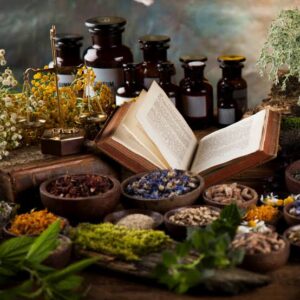
Understanding the principles of herbal healing unveils a profound and time-tested approach to health and wellness. As we delve into the holistic view of health, the vitality of the body’s systems, and the synergy of herbal compounds, we rediscover an ancient wisdom that resonates with the intricate dance between nature and human well-being. Herbal healing, with its principles deeply rooted in tradition, offers a pathway to health that is not only effective but also deeply attuned to the inherent wisdom of the natural world.
4. A guide to commonly used medicinal herbs
Nature has long provided a treasure trove of medicinal plants, each with its unique properties and therapeutic benefits. From ancient civilizations to modern herbalism, the use of medicinal herbs has been integral to promoting health and alleviating various ailments. This guide aims to shed light on some commonly used medicinal herbs, exploring their historical uses, health benefits, and practical applications in herbal wellness.
4.1 Echinacea (Echinacea purpurea)
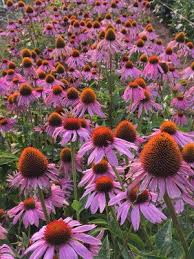
Historical Uses: Native to North America, Echinacea has a rich history of use among Indigenous peoples for immune support and wound healing.
Health Benefits: Known for its immune-boosting properties, Echinacea is commonly used to prevent and reduce the severity of colds and respiratory infections.
Practical Applications: Echinacea is often consumed in the form of teas, tinctures, or supplements. It can also be applied topically in creams or salves for wound healing.
4.2 Ginger (Zingiber officinale)
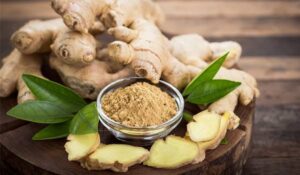
Historical Uses: With roots in ancient Chinese and Ayurvedic medicine, ginger has been used for centuries to address digestive issues and inflammation.
Health Benefits: Ginger is celebrated for its anti-nausea properties, aiding digestion, and reducing inflammation. It’s also known for its warming effect on the body.
Practical Applications: Ginger can be consumed fresh, as a tea, in culinary dishes, or as a supplement. It’s a versatile herb used in both sweet and savory preparations.
4.3 Turmeric (Curcuma longa)
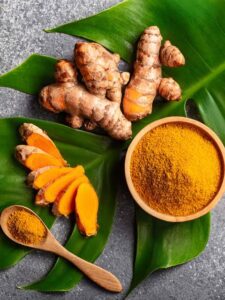
Historical Uses: A staple in Ayurvedic medicine, turmeric has a centuries-old history of use for its anti-inflammatory and antioxidant properties.
Health Benefits: Turmeric’s active compound, curcumin, is known for its potent anti-inflammatory effects. It may also support joint health and boost the immune system.
Practical Applications: Often consumed as a spice in curries, turmeric can also be enjoyed in teas or taken as a supplement for a more concentrated dose.
4.4 Lavender (Lavandula angustifolia)
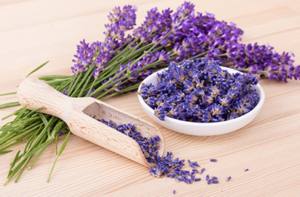
Historical Uses: Lavender has been revered for its calming and aromatic properties. Ancient cultures used it to promote relaxation and ease stress.
Health Benefits: Lavender is commonly associated with its soothing effects on the nervous system, helping to reduce anxiety and improve sleep quality.
Practical Applications: Lavender can be used in aromatherapy, as an essential oil, in teas, or in topical applications like balms and massage oils.
4.5 Peppermint (Mentha × piperita)
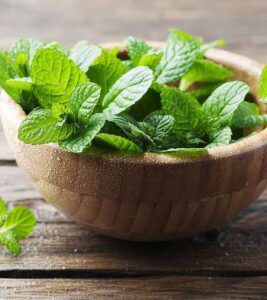
Historical Uses: Peppermint has a long history of use for its digestive benefits, with roots in ancient Egyptian and Roman medicine.
Health Benefits: Peppermint is known for its ability to relieve indigestion, soothe headaches, and alleviate symptoms of irritable bowel syndrome (IBS).
Practical Applications: Peppermint is commonly consumed as a tea, used in culinary dishes, or applied topically in the form of essential oil for aromatherapy or massage.
4.6 Chamomile (Matricaria chamomilla)
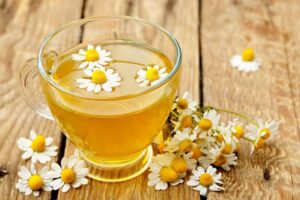
Historical Uses: Chamomile has been valued for its calming properties, with a history dating back to ancient Egypt and Rome.
Health Benefits: Chamomile is renowned for its mild sedative effects, making it a popular choice for promoting relaxation, alleviating stress, and improving sleep.
Practical Applications: Chamomile is commonly consumed as a tea, and its essential oil is used in aromatherapy. It’s also found in topical products like creams and salves.
4.7 Garlic (Allium sativum)
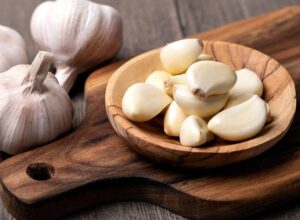
Historical Uses: Garlic has a rich history of medicinal use, dating back to ancient civilizations such as the Egyptians, Greeks, and Romans.
Health Benefits: Garlic is known for its immune-boosting and antimicrobial properties. It’s also believed to support cardiovascular health and lower blood pressure.
Practical Applications: Widely used in culinary dishes, garlic can also be consumed raw, as a supplement, or in the form of aged garlic extract.
4.8 Harnessing Nature’s Pharmacy
This guide provides just a glimpse into the vast array of medicinal herbs available in nature’s pharmacy. While these herbs have historical uses and known health benefits, it’s essential to approach herbal remedies with awareness and, when needed, seek guidance from qualified healthcare professionals. Incorporating these herbs into your wellness routine can offer a natural and holistic approach to supporting your health and promoting overall well-being.
5. Natural solutions for everyday health issues
In the pursuit of a healthier and more balanced life, turning to nature’s remedies can offer effective and gentle solutions for common health issues. From minor ailments to everyday stresses, incorporating natural alternatives into your wellness routine can empower you to take charge of your health. This exploration delves into various natural solutions for everyday health issues, providing insights into the versatility and efficacy of holistic approaches.
5.1 Aromatherapy for Stress Relief

Everyday stress is a common challenge, and aromatherapy offers a simple yet powerful solution. Essential oils such as lavender, chamomile, and citrus blends have calming properties that can help alleviate stress and promote relaxation. Diffusing these oils, using them in a bath, or wearing them as a personal fragrance can provide a natural and soothing remedy for daily tension.
5.2 Ginger for Digestive Woes

Ginger, a versatile herb, has been used for centuries to address various digestive issues. Whether it’s indigestion, nausea, or motion sickness, ginger’s natural anti-nausea and anti-inflammatory properties make it a go-to remedy. Enjoying ginger tea, adding fresh ginger to meals, or taking ginger supplements can help soothe the digestive system.
5.3 Honey and Lemon for Sore Throats
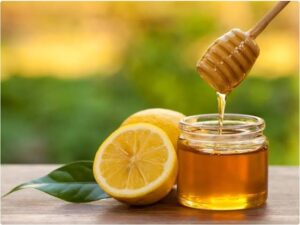
The classic combination of honey and lemon is a time-tested remedy for soothing sore throats. Honey’s antimicrobial properties can help fight infection, while lemon provides a boost of vitamin C. Mixing these two in warm water or tea creates a comforting elixir that not only relieves throat discomfort but also provides immune support.
5.4 Peppermint for Headaches
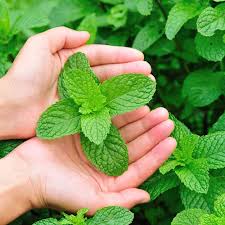
Peppermint, with its invigorating scent and analgesic properties, can be a natural remedy for headaches. Applying peppermint essential oil to the temples or inhaling its aroma can help ease tension and reduce headache symptoms. Peppermint tea may also be beneficial for those who prefer an internal approach.
5.5 Chamomile for Sleep Troubles

If sleep eludes you, chamomile can be a gentle ally in promoting relaxation and improving sleep quality. Chamomile tea, with its mild sedative effects, is a popular bedtime ritual. Additionally, incorporating chamomile essential oil in aromatherapy or adding a few drops to a warm bath can contribute to a restful night’s sleep.
5.6 Turmeric for Joint Discomfort

Turmeric, known for its anti-inflammatory properties, can be a natural solution for joint discomfort. Curcumin, the active compound in turmeric, has been studied for its potential to reduce inflammation and support joint health. Adding turmeric to your meals, consuming it as a tea, or taking supplements can offer natural relief for everyday joint issues.
5.7 Eucalyptus for Respiratory Congestion
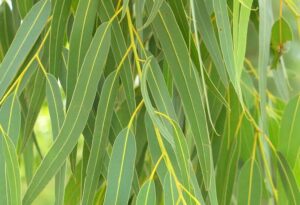
When faced with respiratory congestion or a stubborn cold, eucalyptus is a well-regarded natural remedy. Eucalyptus essential oil, when used in steam inhalation or in a diffuser, can help clear nasal passages and provide relief from respiratory discomfort. Eucalyptus-based ointments or balms may also be applied topically for added benefits.
5.8 Garlic for Immune Support

Garlic, celebrated for its immune-boosting properties, is a valuable ally in warding off common illnesses. Incorporating raw or cooked garlic into your meals or taking garlic supplements can provide a natural boost to the immune system, helping your body defend itself against everyday threats.
5.9 Thyroid healing through Herbal wellness Please Click⇒
Nurturing Well-Being with Nature’s Bounty
Natural solutions for everyday health issues offer a holistic and gentle approach to well-being. By harnessing the power of herbs, essential oils, and wholesome ingredients, individuals can proactively address common health concerns while minimizing reliance on synthetic remedies. Integrating these natural solutions into your daily life not only supports your health but also fosters a deeper connection with the healing gifts that nature provides. As always, it’s advisable to consult with healthcare professionals for personalized guidance, ensuring that your natural remedies align with your overall health and wellness goals.
6. Exploring the soothing world of herbal teas
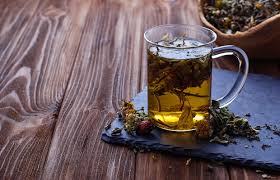
In the vast and diverse landscape of teas, herbal infusions stand out as a soothing and aromatic category that transcends mere beverage status. Herbal teas, often referred to as tisanes, are crafted from an array of dried flowers, fruits, herbs, and spices, each carrying its unique set of flavors and potential health benefits. This exploration invites you to delve into the enchanting world of herbal teas, where fragrance and flavor combine with therapeutic properties to offer a truly comforting and holistic experience.
6.1 The Nature-Inspired Palette of Herbal Teas
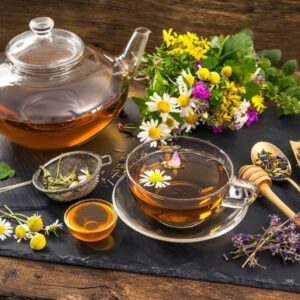
Herbal teas draw from the rich tapestry of nature, offering a kaleidoscope of colors, scents, and flavors. From the vibrant hues of hibiscus to the earthy notes of chamomile, each herbal infusion tells a story of the plant kingdom’s diverse offerings. The absence of tea leaves (Camellia sinensis) distinguishes herbal teas from traditional teas, allowing for an expansive canvas of botanical possibilities.
6.2 A Symphony of Aromas
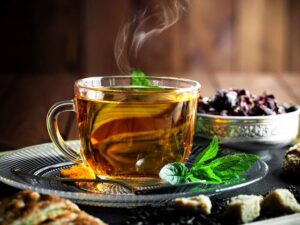
Step into the world of herbal teas, and you’ll be greeted by an aromatic symphony. The fragrances released as hot water infuses the herbs are often therapeutic in themselves, offering a sensory journey that calms the mind and elevates the spirit. Lavender, mint, and lemongrass release their aromatic notes, creating an immersive experience that transcends the act of sipping a beverage.
6.3 Health and Well-Being Infused
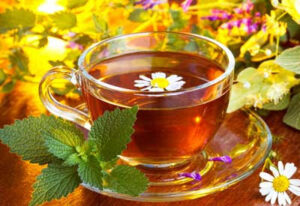
Beyond their delightful flavors, herbal teas have been cherished for their potential health benefits for centuries. Chamomile, known for its calming properties, is a bedtime favorite to promote restful sleep. Peppermint, with its invigorating menthol, aids digestion and alleviates headaches. Rooibos, rich in antioxidants, is celebrated for its immune-boosting qualities. The medicinal heritage of herbal teas adds a layer of wellness to every cup.
6.4 Crafting Your Herbal Blend
One of the joys of exploring herbal teas is the opportunity to craft your personalized blends. Embrace your inner herbalist by combining different herbs and spices to create a potion that suits your taste preferences and wellness goals. Whether it’s a calming bedtime blend or an invigorating morning elixir, the possibilities for herbal infusion creativity are endless.
6.5 A Ritual of Relaxation

In a world that often moves at a rapid pace, the act of preparing and savoring a cup of herbal tea becomes a cherished ritual of relaxation. The gentle process of steeping the herbs, the warmth emanating from the cup, and the unhurried sipping create a mindful pause in the day. It’s a moment to reconnect with oneself, fostering a sense of tranquility and balance.
6.6 Variety Beyond Caffeine
Herbal teas offer a caffeine-free alternative to traditional teas, making them an ideal choice for those seeking a soothing beverage at any time of the day. Whether you’re looking to unwind in the evening without the stimulating effects of caffeine or searching for a hydrating option beyond water, herbal teas provide a versatile and enjoyable solution.
6.7 The Art of Brewing

Brewing herbal teas is a simple yet delightful art. Experiment with water temperature, steeping times, and ratios to find the perfect balance for your preferred strength and flavor. Some herbs shine with a longer steep, while others impart their essence more quickly. The beauty of herbal teas lies in the exploration of these nuances, allowing you to tailor each cup to your liking.
6.8 Sipping Nature’s Elixir

As you embark on the journey of exploring the soothing world of herbal teas, savor each sip as a moment of connection with the natural world. Let the flavors dance on your palate, the aromas transport you to serene landscapes, and the therapeutic properties enhance your well-being. Whether you’re seeking a remedy for a specific ailment or simply indulging in the pleasure of a comforting cup, herbal teas offer a timeless invitation to experience the gentle magic of nature in every infusion.
7. The connection between herbs and emotional well-being
In the intricate dance between nature and human well-being, herbs emerge as potent allies for nurturing not just physical health but also emotional well-being. The profound connection between herbs and our emotional state has been recognized for centuries, with various cultures incorporating plant remedies into traditional healing practices. This exploration delves into the ways in which herbs contribute to emotional well-being, offering a holistic approach to balance and harmony.
7.1 Herbs as Nature’s Nurturers
From the calming influence of chamomile to the uplifting aroma of lavender, herbs have a remarkable ability to influence our emotional landscape. Many herbs contain compounds that interact with our nervous system, impacting neurotransmitters and hormones associated with mood and stress. The gentle yet effective nature of herbal remedies makes them valuable tools for promoting emotional equilibrium.
7.2 Calming the Mind with Chamomile

Chamomile, with its delicate white flowers and apple-like fragrance, is renowned for its calming properties. This herb contains compounds like apigenin that interact with receptors in the brain, inducing a sense of relaxation. A cup of chamomile tea can be a soothing ritual, helping to ease tension and promote a tranquil state of mind.
7.3 Uplifting Spirits with Lavender
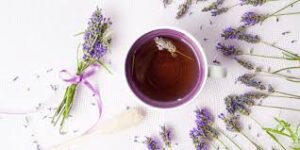
Lavender, celebrated for its enchanting scent and vibrant purple blooms, goes beyond its role in perfumery. The essential oil derived from lavender is known to have calming and mood-boosting effects. Whether used in aromatherapy, infused into teas, or incorporated into bath rituals, lavender has the power to uplift spirits and alleviate stress.
7.4 Adaptogens for Stress Resilience
Certain herbs, known as adaptogens, excel in supporting the body’s ability to adapt to stressors and maintain balance. Examples include ashwagandha, rhodiola, and holy basil. These herbs have been used in traditional medicine systems like Ayurveda and Traditional Chinese Medicine to enhance resilience, reduce the impact of stress, and foster emotional well-being.
7.5 Lemon Balm for Anxiety Relief

Lemon balm, a member of the mint family, is prized for its lemon-scented leaves and calming properties. Studies suggest that compounds in lemon balm, such as rosmarinic acid, may have anxiolytic effects, helping to reduce symptoms of anxiety. Incorporating lemon balm into teas or tinctures can offer a gentle remedy for moments of heightened stress.
7.6 St. John’s Wort for Mood Support

St. John’s Wort has a long history of use in traditional medicine for its potential to alleviate symptoms of mild to moderate depression. It is believed to work by influencing neurotransmitters like serotonin. While its effectiveness is acknowledged, it’s crucial to consult with healthcare professionals due to potential interactions with certain medications.
7.7 Connecting with Nature as a Source of Healing
The act of engaging with herbs, whether through gardening, foraging, or crafting herbal remedies, fosters a deep connection with nature. This connection itself is a powerful contributor to emotional well-being. Spending time in nature, cultivating herbs, and preparing herbal infusions can be therapeutic activities that promote mindfulness and a sense of harmony.
7.8 Mindful Herbal Rituals

Incorporating herbs into daily rituals can create mindful moments that contribute to emotional well-being. Whether it’s sipping a cup of herbal tea, practicing aromatherapy with essential oils, or indulging in herbal-infused baths, these rituals provide opportunities for self-care, reflection, and the cultivation of a positive emotional space.
7.9 Holistic Wellness with Herbs
The connection between herbs and emotional well-being underscores the holistic nature of wellness. Embracing herbs as allies for emotional health involves not just their biochemical effects but also the intention and mindfulness with which they are incorporated into our lives. As we recognize the profound impact of herbs on our emotional landscape, we are invited to cultivate a harmonious relationship with the plant kingdom for overall well-being.
8. Incorporating medicinal herbs into your daily meals
The kitchen, often regarded as the heart of the home, is not only a space for culinary creativity but also a potential apothecary filled with healing herbs. The integration of medicinal herbs into daily meals is a delightful and accessible way to enhance both flavor and well-being. This exploration celebrates the art of culinary herbalism, inviting you to discover the diverse and enriching world of infusing your dishes with the healing power of herbs.
8.1 Herbal Alchemy in the Kitchen
Culinary herbalism is a fusion of gastronomy and herbal medicine, where herbs are not just flavor enhancers but also contributors to overall health. The culinary landscape offers a plethora of herbs, each with its unique taste profile and potential health benefits. From robust rosemary to vibrant cilantro, the herbs in your kitchen can become allies in supporting your well-being.
8.2 A Symphony of Flavors

Herbs bring a symphony of flavors to your meals, elevating them from mere sustenance to a sensory experience. Basil infuses dishes with a sweet, slightly peppery taste, while thyme adds earthy and aromatic notes. Experimenting with various herbs allows you to tailor your meals to your taste preferences and explore the vast array of flavors nature provides.
8.3 Enhancing Nutritional Value

Beyond their flavor contributions, many herbs boast impressive nutritional profiles. Fresh herbs like parsley and cilantro are rich in vitamins and antioxidants, contributing to the overall nutritional value of your meals. Using a variety of herbs ensures that you benefit from a diverse range of nutrients that support your body’s functions.
8.4 Rosemary for Memory and Focus

Rosemary, with its distinctive pine-like aroma, is not just a culinary delight but also holds potential cognitive benefits. Studies suggest that the aroma of rosemary may enhance memory and concentration. Adding rosemary to roasted vegetables, meats, or infusing it into olive oil can bring both flavor and potential mental clarity to your meals.
8.5 Turmeric for Anti-Inflammatory Goodness
Known for its golden hue and earthy flavor, turmeric is a potent anti-inflammatory herb. Curcumin, its active compound, has been studied for its potential health benefits. Incorporating turmeric into curries, soups, or even smoothies not only adds a warm and slightly bitter taste but also introduces a burst of anti-inflammatory goodness.
8.6 Mint for Digestive Harmony

Mint, with its refreshing and cool flavor, has been traditionally valued for its digestive properties. Peppermint, in particular, is known to soothe digestive discomfort. Adding fresh mint leaves to salads, infusing them into water, or using mint as a garnish for dishes not only enhances taste but also supports digestive well-being.
8.7 Dandelion Greens for Liver Support

Often considered a weed, dandelion greens are a nutritional powerhouse and are believed to support liver health. Incorporate them into salads or sauté them with garlic and olive oil for a tasty and potentially detoxifying addition to your meals.
8.8 Sage for Respiratory Health

Sage, with its earthy and savory flavor, has been traditionally used for its potential respiratory benefits. Infusing sage into teas, incorporating it into stuffing, or pairing it with roasted meats can introduce both culinary depth and respiratory support to your meals.
8.9 Practical Tips for Culinary Herbalism
Fresh is Best: Whenever possible, opt for fresh herbs. Their flavors are often more vibrant, and you can experiment with using both the leaves and stems in your dishes.
1. Balancing Act: Experiment with herb combinations to achieve a balance of flavors. Consider pairing strong herbs like thyme with milder ones like parsley for a nuanced taste.
2. Infusing Oils and Vinegars: Create herb-infused oils or vinegars to impart flavors to your cooking. This is a simple yet effective way to incorporate herbal goodness into your meals.
3. Garnishing with Intent: Use herbs as a finishing touch or garnish to preserve their flavors. Sprinkling fresh herbs on a dish just before serving adds a burst of freshness and aroma.
4. Educate Your Palate: Expand your herbal repertoire by trying herbs you may not be familiar with. Experimenting with different herbs allows you to discover new flavors and potential health benefits.
8.10 A Culinary Herbal Adventure

Incorporating medicinal herbs into your daily meals is not just a culinary choice but a holistic approach to well-being. As you embark on this culinary herbal adventure, you’ll find that the herbs in your kitchen are not only versatile flavor enhancers but also allies in supporting your health. From stimulating cognitive function to aiding digestion, the herbs you choose can contribute to a symphony of well-being, transforming your daily meals into not just sustenance but a delightful and nourishing experience.
9. Harnessing the natural beauty benefits of herbs
Nature, with its boundless botanical treasures, has long been a source of inspiration for enhancing beauty and promoting skin health. Herbs, with their diverse array of compounds and therapeutic properties, offer a natural and holistic approach to skincare. This exploration dives into the world of herbal beauty, revealing the secrets of harnessing the natural beauty benefits that herbs bestow upon our skin and hair.
9.1 The Wisdom of Herbal Beauty Rituals
Herbal beauty rituals have been integral to various cultures throughout history, each with its unique approach to harnessing the power of plants. From Cleopatra’s use of aloe vera in ancient Egypt to Ayurvedic skincare practices in India, the wisdom of herbal beauty has transcended time, offering holistic solutions for maintaining radiant and healthy skin.
9.2 Nourishment from the Inside Out
The saying “you are what you eat” holds true when it comes to skin health. Many herbs are rich in vitamins, minerals, and antioxidants that nourish the skin from within. Incorporating herbs like nettle, dandelion, and burdock into your diet can contribute to clearer, healthier skin by supporting detoxification and providing essential nutrients.
9.3 Calendula for Skin Soothing

Calendula, with its vibrant orange flowers, is renowned for its skin-soothing properties. The anti-inflammatory and antimicrobial compounds in calendula make it ideal for calming irritated skin, reducing redness, and promoting healing. Calendula-infused oils or creams can be applied topically to nourish and soothe the skin.
9.4 Chamomile for Gentle Care

Chamomile, with its delicate white flowers, is celebrated for its gentle and calming effects on the skin. Whether used in teas or infused into skincare products, chamomile can help soothe sensitive skin, reduce inflammation, and provide relief for conditions like eczema or rosacea.
9.5 Rosemary for Hair Health

Rosemary, with its aromatic leaves, is not just a culinary herb but also a beauty secret for promoting hair health. Rosemary essential oil has been associated with stimulating hair growth, improving scalp health, and preventing premature graying. Incorporating rosemary-infused hair products or using rosemary-infused oils can contribute to lustrous locks.
9.6 Aloe Vera for Skin Hydration

Aloe vera, often referred to as the “plant of immortality,” is a powerhouse for skin hydration and healing. The gel inside aloe vera leaves is rich in vitamins, minerals, and antioxidants that soothe and moisturize the skin. Applying aloe vera gel directly to the skin provides a natural remedy for sunburn, dryness, and irritation.
9.7 Turmeric for Radiant Complexion

Turmeric, with its golden hue, has been a beauty staple in traditional Ayurvedic practices. Curcumin, the active compound in turmeric, has potent anti-inflammatory and antioxidant properties. Turmeric face masks or creams can contribute to a radiant complexion by reducing inflammation, brightening the skin, and combating signs of aging.
9.8 Lavender for Relaxation and Skin Health

Lavender, known for its calming fragrance, also offers benefits for the skin. Lavender essential oil has antimicrobial properties that can help with acne-prone skin, and its soothing aroma contributes to relaxation, reducing stress-related skin issues. Incorporating lavender-infused products into your skincare routine can promote both skin health and mental well-being.
9.9 Harnessing Herbal Elixirs
Herbal infusions, toners, and serums can be powerful elixirs for your skin. Crafting your skincare products using herbs like rose petals, chamomile, or green tea allows you to tailor formulations to your skin’s specific needs. These herbal concoctions can offer hydration, balance oil production, and provide a natural glow.
9.10 Nature’s Bounty for Beauty

As we embrace the natural beauty benefits of herbs, we recognize that skincare extends beyond external applications to holistic well-being. Herbs offer a harmonious synergy of nutrients, antioxidants, and therapeutic compounds that promote not only radiant skin and lustrous hair but also a sense of connection with nature’s timeless wisdom. Whether infused into skincare products or incorporated into daily rituals, harnessing the beauty benefits of herbs is a holistic journey that nurtures both the body and the soul.
10. The resurgence of herbalism in contemporary healthcare
In the fast-paced world of modern medicine, where pharmaceuticals and advanced technologies dominate the healthcare landscape, there has been a notable resurgence of interest in traditional herbalism. Herbalism, the use of plants for medicinal purposes, is an ancient practice that has deep roots in various cultures worldwide. In recent years, there has been a growing recognition of the potential benefits of herbal remedies in addressing a wide range of health issues. This resurgence is driven by a desire for more natural and holistic approaches to healthcare, as well as a renewed appreciation for the wisdom of traditional healing practices.
10.1 The Shift Towards Holistic Healthcare:
Contemporary healthcare is witnessing a shift towards more holistic and patient-centered approaches. As individuals seek alternatives to conventional treatments with potential side effects, herbalism has emerged as a compelling option. Herbs are valued not only for their potential therapeutic properties but also for their ability to treat the root cause of ailments, rather than merely alleviating symptoms. This holistic approach aligns with the growing awareness of the interconnectedness of physical, mental, and emotional well-being.
10.2 The Power of Plant-Based Medicine:

Herbal remedies are derived from various parts of plants, including leaves, roots, flowers, and bark, each possessing unique therapeutic compounds. Many herbal traditions, such as Ayurveda, Traditional Chinese Medicine (TCM), and Native American herbalism, have long recognized the healing power of plants. Modern research is catching up, exploring the pharmacological properties of herbs and validating their efficacy in treating conditions ranging from chronic pain and inflammation to anxiety and digestive disorders.
10.3 Integration with Conventional Medicine:

One notable aspect of the resurgence of herbalism is its integration with conventional medicine. Recognizing the potential synergies, healthcare professionals are increasingly incorporating herbal remedies into treatment plans. This integration is supported by a growing body of scientific research that validates the effectiveness of certain herbs. Herbal supplements, once relegated to health food stores, are finding their place on pharmacy shelves, emphasizing a complementary approach to overall well-being.
10.4 Challenges and Considerations:
While the resurgence of herbalism is promising, it is not without challenges. Standardization of herbal preparations, ensuring product quality and safety, and addressing potential herb-drug interactions are areas that require careful consideration. Education of both healthcare professionals and the general public is essential to foster informed decision-making regarding the use of herbal remedies.
The resurgence of herbalism in contemporary healthcare reflects a shift towards a more holistic and patient-centered approach to well-being. As people seek alternatives to conventional treatments, herbal remedies offer a natural and time-tested option. The integration of herbalism with modern medicine signifies a promising future where the best of both worlds can contribute to improved health outcomes. With ongoing research and a commitment to education, herbalism is poised to play an increasingly significant role in the evolving landscape of healthcare.
11. Growing your own herbal garden
In an era where the importance of sustainable living and holistic well-being is gaining momentum, the idea of cultivating your own herbal garden has become increasingly popular. Growing herbs at home not only provides a convenient and cost-effective source of fresh, organic ingredients for culinary delights but also opens the door to a wealth of natural remedies for health and wellness. This guide explores the joys and benefits of creating your own herbal oasis right in your backyard or windowsill.
11.1 Choosing the Right Herbs:
The first step in establishing your herbal garden is selecting the right herbs for your needs and climate. Consider both culinary and medicinal herbs based on your interests and requirements. Popular choices for culinary herbs include basil, thyme, rosemary, and mint, while medicinal options may include chamomile, lavender, echinacea, and lemon balm. Research the specific growing conditions and care each herb requires to ensure a thriving garden.
11.2 Planning and Design:
Once you’ve chosen your herbs, plan the layout of your herbal garden. Consider factors such as sunlight exposure, soil quality, and spacing requirements for each herb. Whether you have a spacious backyard or a modest balcony, design your garden to optimize space and create an aesthetically pleasing arrangement. Group herbs with similar water and sunlight needs together to simplify care and enhance growth.
11.3 Soil Preparation and Planting:
Herbs generally prefer well-draining soil rich in organic matter. Prepare the soil by incorporating compost or well-rotted manure to ensure a nutrient-rich environment. Plant your herbs according to their specific requirements, considering factors like spacing and depth. Container gardening is also a great option for those with limited space, allowing you to grow herbs on a windowsill or balcony.
11.4 Caring for Your Herbal Garden:
Regular care is essential for a thriving herbal garden. Watering needs vary among different herbs, so be attentive to the moisture requirements of each plant. Mulching can help retain moisture, suppress weeds, and regulate soil temperature. Pruning and harvesting are crucial for encouraging new growth and preventing your herbs from becoming overgrown. Additionally, be mindful of pests and use natural remedies or companion planting techniques to protect your garden.
11.5 Harvesting and Preserving:
One of the most rewarding aspects of growing your own herbal garden is harvesting fresh, flavorful herbs for culinary use or creating homemade remedies. Harvest herbs in the morning when their essential oils are most concentrated. To preserve herbs, consider drying, freezing, or making herbal infusions and oils. This allows you to enjoy the benefits of your herbal garden year-round.
11.6 Embracing a Lifestyle of Wellness:
Beyond the practical benefits of having fresh herbs at your fingertips, cultivating your own herbal garden fosters a deeper connection to nature and a more sustainable lifestyle. Engaging in the nurturing process of growing, harvesting, and using herbs promotes mindfulness and well-being, contributing to a holistic approach to health.
Growing your own herbal garden is a gratifying and empowering endeavor that brings nature’s bounty to your doorstep. Whether you’re a seasoned gardener or a novice, the journey of cultivating herbs offers a multitude of rewards for both body and soul. Start small, experiment, and let your herbal garden become a sanctuary of well-being in your daily life.
12. Customizing herbal approaches for children, adults, and seniors
Herbalism, with its rich history spanning cultures and generations, provides a versatile approach to wellness. One of its strengths lies in its adaptability to different life stages, addressing the unique needs and sensitivities of children, adults, and seniors. This guide explores the art of customizing herbal approaches to cater to the diverse requirements of individuals at various points in their lives.
12.1 Herbalism for Children:

Children’s growing bodies and developing immune systems require special attention when incorporating herbal remedies. Gentle herbs such as chamomile and calendula can be used to soothe common childhood ailments like digestive discomfort or skin irritations. Immune-boosting herbs like echinacea and elderberry are valuable during cold and flu seasons, offering a natural defense against infections. However, it’s crucial to consult with a healthcare professional before introducing herbs to a child’s routine, ensuring safety and appropriateness for their age.
12.2 Herbal Approaches for Adults:

The herbal toolbox for adults is extensive, offering solutions for a wide range of health concerns. Stress-relieving herbs such as ashwagandha and holy basil can help manage the pressures of daily life, while adaptogenic herbs like rhodiola enhance resilience to various stressors. For digestive support, peppermint and ginger are popular choices, aiding in alleviating indigestion and promoting a healthy gut. Adults can also explore herbs like valerian and passionflower for natural sleep support, providing an alternative to conventional sleep aids.
12.3 Seniors and Herbal Wellness:

As individuals age, their health needs evolve, and herbalism can play a crucial role in promoting senior well-being. Joint health becomes a priority, and anti-inflammatory herbs like turmeric and boswellia may help manage discomfort. Ginseng and ginkgo biloba are known for supporting cognitive function, offering potential benefits for seniors concerned about memory and mental clarity. It’s essential for seniors to work closely with healthcare providers when incorporating herbal remedies, as certain herbs may interact with medications or have contraindications.
12.4 Customizing Blends and Dosages:
Customizing herbal approaches involves creating tailored blends that address specific health concerns for each life stage. For children, herbal teas or glycerin tinctures with mild flavors may be more appealing. Adults can explore a variety of herbal preparations, including capsules, teas, or tinctures, depending on personal preferences. Seniors may find ease in using liquid extracts or herbal-infused oils for topical applications. Dosages should always be adjusted based on individual factors such as weight, overall health, and the severity of symptoms.
12.5 Safety Considerations:

While herbs offer natural alternatives, it’s crucial to approach their use with caution and respect for individual differences. Consultation with a qualified healthcare professional is paramount, especially for children and seniors or individuals with pre-existing health conditions. Understanding potential interactions with medications and monitoring for allergic reactions is essential to ensure the safe incorporation of herbal remedies into one’s wellness routine.
Customizing herbal approaches for children, adults, and seniors allows for a holistic and personalized approach to wellness. The adaptability of herbalism empowers individuals to address health concerns at various life stages, promoting balance and vitality. By combining the wisdom of traditional herbal practices with modern knowledge, individuals can harness the healing power of nature to support their well-being throughout the journey of life.
13. Understanding potential risks and contraindications
The resurgence of interest in herbal remedies brings with it a wealth of potential benefits, but it also underscores the importance of understanding the potential risks and contraindications associated with these natural interventions. While herbs have been used for centuries in traditional medicine, their potency and interactions with individuals can vary. This guide aims to shed light on the essential considerations when incorporating herbal remedies into your wellness routine.
13.1 Individual Variability:
One of the key factors influencing the safety of herbal remedies is the inherent variability in individual responses. Factors such as age, weight, pre-existing health conditions, and medication use can significantly impact how the body reacts to herbs. What works well for one person may not be suitable for another, emphasizing the need for personalized approaches and careful consideration of individual health profiles.
13.2 Interaction with Medications:
Herbs contain bioactive compounds that may interact with medications. These interactions can either enhance or diminish the effects of pharmaceutical drugs, potentially leading to adverse outcomes. It is crucial to consult with a healthcare professional before introducing herbal remedies, especially for individuals taking prescription medications. Certain herbs, like St. John’s Wort, can affect the metabolism of drugs in the liver, potentially altering their effectiveness.
13.3 Allergies and Sensitivities:

While herbs are generally considered natural and safe, allergic reactions and sensitivities can occur. Individuals with known allergies to specific plants should exercise caution when using herbal remedies derived from those plants. Skin reactions, respiratory issues, or digestive discomfort are potential signs of an allergic response. It’s advisable to perform patch tests with topical herbal preparations and start with small doses when ingesting herbs to monitor for any adverse reactions.
13.4 Pregnancy and Lactation:

Pregnant and breastfeeding individuals must exercise extra caution when considering herbal remedies. Certain herbs, such as chamomile, echinacea, and ginseng, may have effects on hormone levels or could potentially impact the developing fetus or breastfeeding infant. Consultation with a qualified healthcare provider is crucial to ensure the safety of herbal use during these critical periods.
13.5 Potential for Overdose:
While rare, some herbs can lead to toxicity when consumed in excessive amounts. This is particularly relevant for concentrated forms of herbal preparations, such as essential oils or tinctures. Herbal remedies should always be used in accordance with recommended dosages, and more is not necessarily better. Overconsumption can lead to adverse effects, ranging from digestive upset to more severe complications.
13.6 Quality and Standardization:

The quality of herbal products varies widely, and substandard preparations may pose additional risks. Contaminants, misidentification of herbs, or incorrect processing can compromise the safety and efficacy of herbal remedies. It is advisable to purchase herbal products from reputable sources that adhere to quality standards and provide transparency regarding the sourcing and manufacturing processes.
So, while herbal remedies offer a natural and holistic approach to health and well-being, it is crucial to approach their use with informed caution. Understanding potential risks and contraindications is fundamental to integrating herbs safely into your wellness routine. Collaboration with healthcare professionals, thorough research, and an awareness of individual health factors can help individuals navigate the vast landscape of herbalism while reaping the benefits of nature’s healing bounty responsibly.
14. Books, websites, and communities for further exploration
Exploring herbal wellness can be a fascinating and enriching journey. Here are recommendations for books, websites, and communities that offer valuable insights and resources on herbalism:
14.1 Books:
“The Herbal Medicine-Maker’s Handbook” by James Green:
A comprehensive guide for those interested in making their herbal remedies, covering various aspects of herbal medicine preparation and usage.
“Rosemary Gladstar’s Medicinal Herbs: A Beginner’s Guide” by Rosemary Gladstar:
Renowned herbalist Rosemary Gladstar provides a beginner-friendly guide to medicinal herbs, emphasizing their uses for health and well-being.
“Medical Herbalism: The Science and Practice of Herbal Medicine” by David Hoffmann:
A well-respected resource that delves into the scientific and practical aspects of herbal medicine, offering a solid foundation for understanding herbal remedies.
“The Modern Herbal Dispensatory: A Medicine-Making Guide” by Thomas Easley and Steven Horne:
This book provides a modern perspective on herbal medicine, focusing on practical applications and the art of creating herbal preparations.
“Adaptogens: Herbs for Strength, Stamina, and Stress Relief” by David Winston and Steven Maimes:
Explores the concept of adaptogens—herbs that help the body adapt to stress—and provides insights into incorporating them into daily life.
14.2 Websites:
Herbal Academy (https://theherbalacademy.com/):
An online platform offering courses, articles, and resources on herbalism for all skill levels, from beginners to advanced practitioners.
American Herbalists Guild (https://www.americanherbalistsguild.com/):
A professional organization promoting the practice of herbalism, offering a directory of herbalists, educational resources, and events.
Mountain Rose Herbs Blog (https://blog.mountainroseherbs.com/):
A blog by the well-known herbal supplier, Mountain Rose Herbs, featuring informative articles on herbal remedies, DIY recipes, and sustainable practices.
HerbMentor (https://www.herbmentor.com/):
An online community and learning platform that provides courses, articles, and a supportive community for herbal enthusiasts.
PubMed (https://pubmed.ncbi.nlm.nih.gov/):
While not exclusive to herbalism, PubMed is a valuable resource for accessing scientific research on herbs and their potential health benefits.
14.3 Communities:
Reddit – Herbalism Community (https://www.reddit.com/r/herbalism/):
An active online community where individuals share experiences, ask questions, and discuss various aspects of herbalism.
Facebook Groups – Herbalism and Herbal Medicine:
Numerous Facebook groups cater to herbal enthusiasts, providing platforms for sharing knowledge, asking questions, and connecting with like-minded individuals.
Local Herbal Meetup Groups:
Check for local herbal meetups in your area. These gatherings often include workshops, herb walks, and opportunities to connect with herbalists in your community.
Exploring these books, websites, and communities will offer a wealth of information, guidance, and community support as you embark on your herbal wellness journey. Always remember to approach herbalism with a curious and open mind, and consult with healthcare professionals when needed.


Leave a Comment